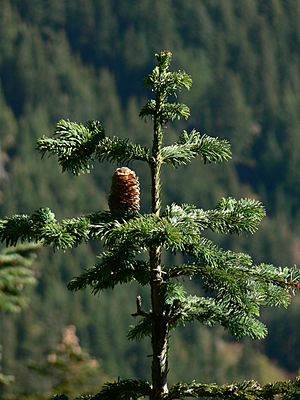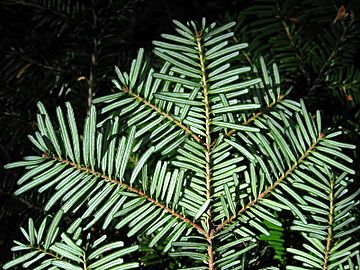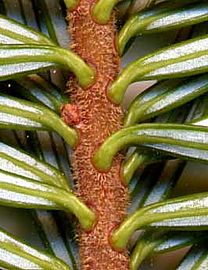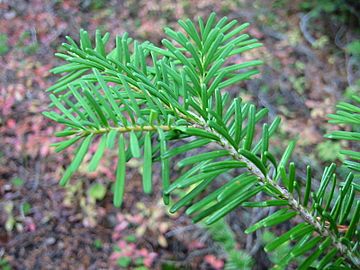Pacific silver fir facts for kids
Quick facts for kids Pacific silver fir |
|
|---|---|
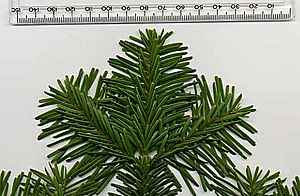 |
|
| Pacific silver fir foliage from above | |
| Conservation status | |
| Scientific classification | |
| Genus: |
Abies
|
| Species: |
amabilis
|
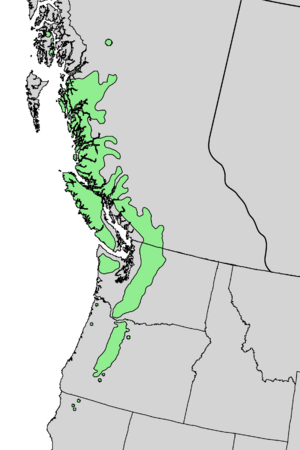 |
|
| Range | |
The Pacific silver fir (scientific name: Abies amabilis) is a type of fir tree. It grows naturally in the Pacific Northwest part of North America. You can find it in places like Alaska, British Columbia, Washington, Oregon, and a tiny bit of California.
People sometimes call it the white fir, red fir, or lovely fir. This tree likes cool, wet places. It often grows in temperate rain forests. It can be found from sea level up to 2,300 meters high. Other trees like western hemlock and Douglas fir often grow near it.
Contents
What Does the Pacific Silver Fir Look Like?
The Pacific silver fir is a big evergreen coniferous tree. This means it keeps its needles all year round. It can grow very tall, usually 30 to 45 meters high. Some can even reach 72 meters! Its trunk can be up to 1.2 meters wide.
Bark and Leaves
The bark on young trees is light gray and thin. It has small bumps filled with sticky resin. As the tree gets older, the bark turns darker. It also gets scales and deep lines.
The leaves are like needles. They are flat and about 2 to 4.5 centimeters long. They are dark green on top. Underneath, they have two white lines made of tiny pores called stomata. These pores help the tree breathe. The tip of each needle is slightly notched.
How Leaves Grow
The needles grow in a spiral pattern around the branch. But each needle twists at its base. This makes them lie flat on either side of the branch. No needles grow underneath the branch. The young branches are orange-red. They feel soft because they are covered in tiny hairs, which is called pubescence.
Cones and Seeds
The cones are 9 to 17 centimeters long and 4 to 6 centimeters wide. They are dark purple before they are fully grown. The small parts that make up the cone (called bracts) are short. They are hidden inside the closed cone.
The cones break apart when they are mature. This happens about 6 to 7 months after the tree is pollinated. When the cones break, they release winged seeds. These wings help the seeds fly away in the wind.
Related Trees
The Pacific silver fir is very similar to a tree from Japan called Maries' fir. Maries' fir has slightly shorter needles. Its cones are also smaller, usually 5 to 11 centimeters long.
What Is the Pacific Silver Fir Used For?
The wood from the Pacific silver fir is soft and not very strong. It is often used to make paper. It is also used for things like packing crates and other simple building projects.
The needles of this tree smell nice. Because of its pleasant scent, people sometimes use its branches for Christmas decorations. It can even be used as a Christmas tree.
This fir is also planted as an ornamental tree in big parks. This means it's grown just for its beauty. However, it needs cool, wet summers to grow well. So, it can only be planted successfully in certain places. For example, it grows well in western Scotland and southern New Zealand.
See also
 In Spanish: Abeto del Pacífico para niños
In Spanish: Abeto del Pacífico para niños



